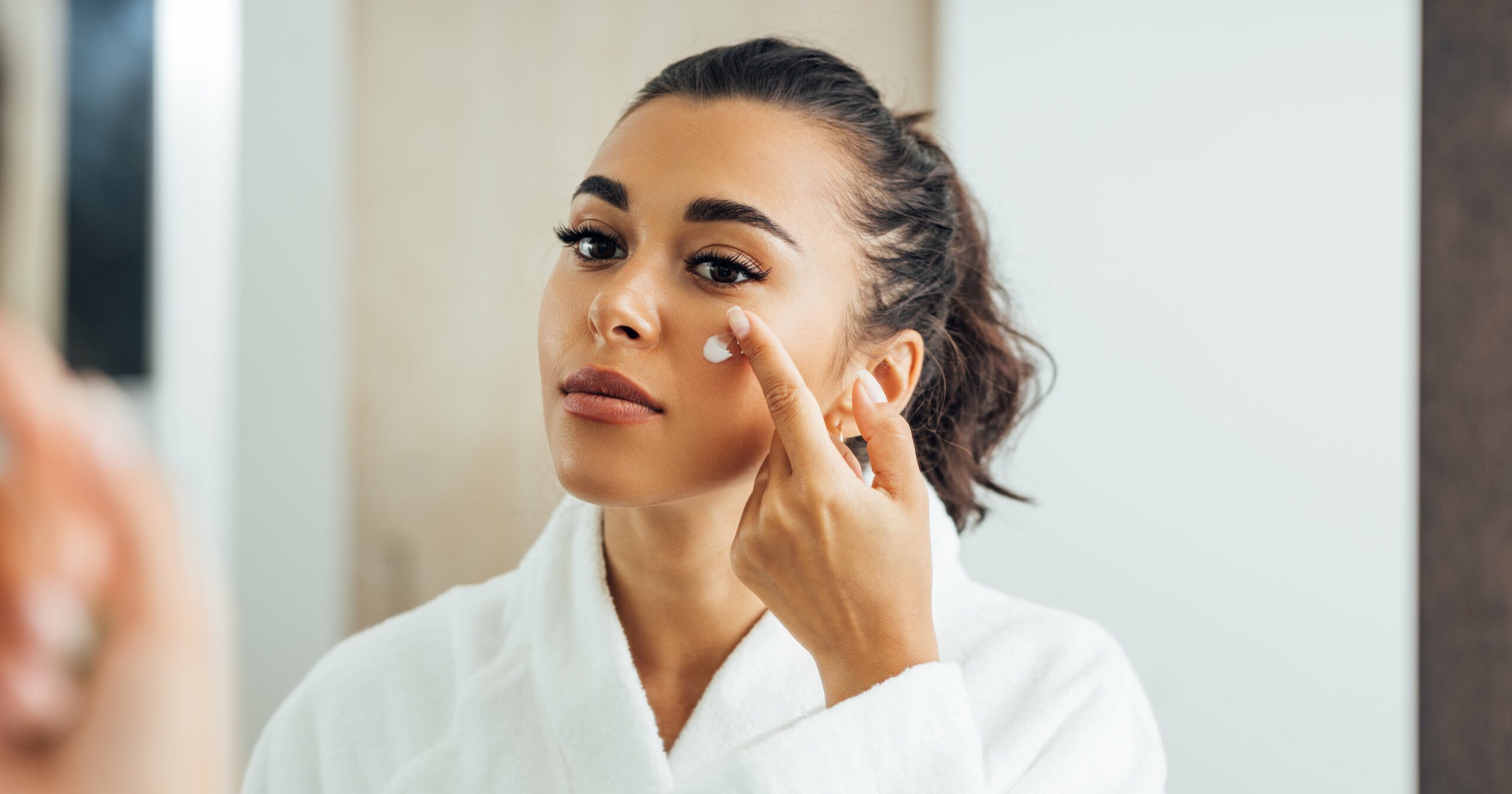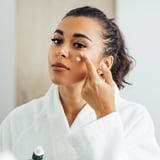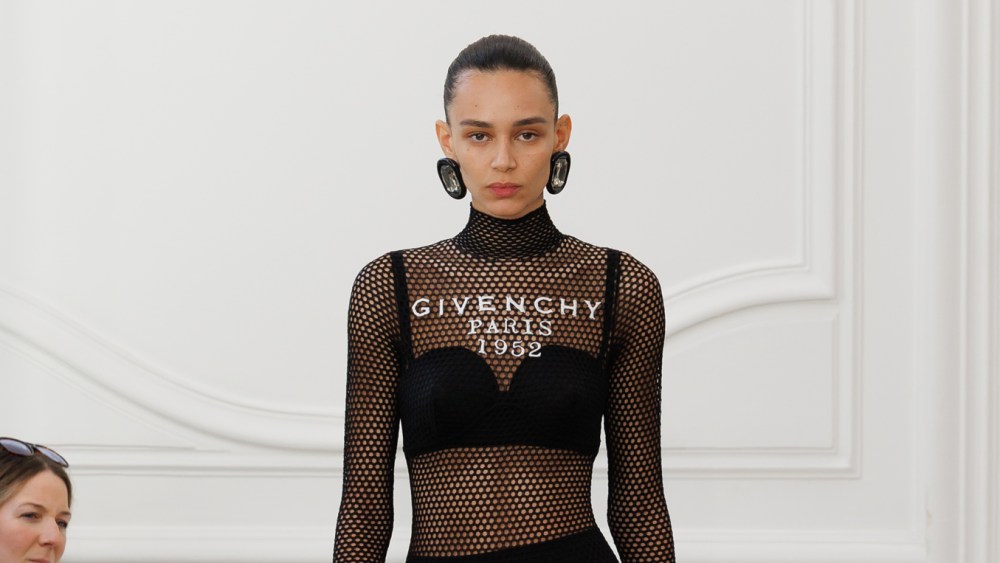Image Source: Getty/ Artem Varnitsin/ EyeEm
By now, you’ve probably heard that retinoids are a holy-grail skin-care ingredient – especially retinol – and it’s true. They deliver a myriad of skin-care benefits, no matter your skin type, concerns, and goals.
“Retinoids, in general, are considered to be anti-aging superstars,” Sarah Taylor, MD, MPH, dermatologist and assistant professor of dermatology at Wake Forest University School of Medicine, tells POPSUGAR. “They improve the overall texture and tone of the skin as well as help to even out discolorations from long-term sun damage. They also help skin cells communicate more effectively, thus retraining them how to behave ‘younger’ after years of damage.”
Lately, however, you’ve probably started to notice products listing “retinal” as an active ingredient. No, it’s not a typo; retinal is its own category of retinoid, and experts say it may be more potent than the retinol that we have become accustomed to. So, what exactly is retinal and what’s the difference between retinol and retinal? We asked Dr. Taylor and dermatologist Hadley King, MD, FAAD, to break down everything we need to know about the two ingredients, from where to find them to their personal product recommendations, below.
What Is Retinal?
Retinal, otherwise known as retinaldehyde, is a type of retinoid. “Between the two, retinol is a little weaker [than retinal],” Dr. Taylor says. “This has to do with the biochemical pathways of each from synthesis, or the construction of the compounds, to when they integrate into the skin and undergo further biochemical conversions.”
As with most skin-care products, what is “better” for you is relative. “Although retinol-containing products are more common and widely available, they take longer to see results,” Dr. Taylor says. “Retinal is a more potent retinoid, and thus visible results will be seen sooner with consistent use.”
However, it is important to take your individual skin concerns and lifestyles into consideration when deciding which form of retinoid to use. “First, do not use retinoids if pregnant or breastfeeding,” Dr. King says. “If you are just interested in adding retinoids to your skin-care routine, there are milder formulations of topical retinoid products that contain ingredients that moisturize and support the skin barrier and use less potent forms of the retinoid ingredient, so most people will be able to tolerate at least those milder formulations.”
However, there may be some people who cannot tolerate even a gentle formulation – particularly those with rosacea and very sensitive skin. “If you experience either of these skin conditions, it is important to discuss retinoid usage with your dermatologist before use.”
What Is the Difference Between Retinal and Retinol?
The difference between retinol and retinal can easily be misconstrued as they both are technically retinoids, but there is definitely a difference that should be noted. “Retinoic acid, or tretinoin, is the most potent retinoid form that can be used by the skin; however, it’s available only by prescription,” Dr. King says. “The other retinoids that are found commonly in over-the-counter products are retinyl palmitate, retinol, and retinaldehyde (or “retinal”). These have to undergo a conversion process in order to turn into retinoic acid before the skin can use them.”
So the difference between retinal vs. retinol, essentially, is potency and efficacy. “The more steps required to be converted into retinoic acid, the weaker the retinoid is,” Dr. King says. “So for those who can tolerate a stronger over-the-counter retinoid option, retinal is a good choice. For those with more sensitive skin, retinol or retinyl palmitate may be better options.”
Retinal Side Effects
There is always an adjustment period when using new skin-care products, but it is important to take extra care of your skin when using more potent ingredients like retinoids. “Retinization is the adjustment period during which the skin adapts to the use of topical retinoids like tretinoin,” says Dr. King. “During this time, the skin may become irritated, resulting in dryness, peeling, scaling, redness, or a burning or stinging sensation.”
There are a few ways to help your skin better acclimate to retinization. “Start with a pea-sized amount of the retinoid for the whole face, every other night; follow with moisturizer,” Dr. King says. “Increase to every night if/ as tolerated, or decrease frequency if necessary.” Also recommended is the “sandwich technique,” where you can apply moisturizer first, followed by the retinoid product, then more moisturizer. When doing this, Dr. King recommends making sure to use a gentle retinoid formula to avoid other potentially irritating ingredients.
Best Retinal Products
If you’re ready to dive right into the retinal pool, Dr. King recommends the Maelove Moonlight Retinal Super Serum ($40). “This product contains 0.11 percent retinaldehyde for potent anti-aging benefits,” she says. “The formulation is also well balanced with nourishing ingredients like niacinamide, bisabolol, hyaluronic acid, and squalane to support the skin barrier and minimize irritation.”
Another good option to consider if you’ve tried over-the-counter retinol but are looking for something a little stronger is the Medik8 Crystal Retinal 6 Serum ($82). It contains less stabilized retinal than Maelove (.06 percent, to be specific), but enough to see visible results.
It’s always fun to discover a new ingredient, but there is never any certainty that said ingredient will work for your individual skin type. If interested in trying a product like retinal, always speak to your dermatologist before incorporating it into your routine.




